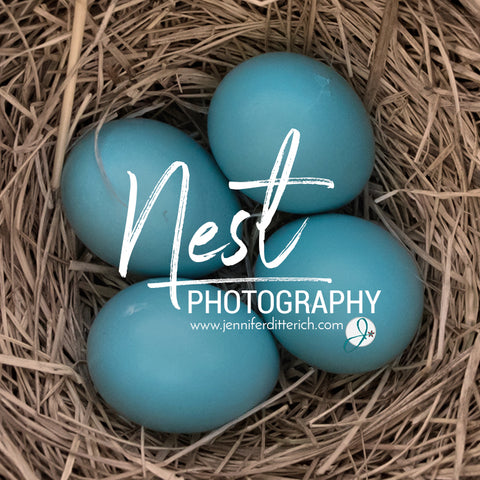
Spring is here and that means nesting season. Finding a nest is such a beautiful surprise and exciting moment. If you plan to photograph a nest, here are some things to keep in mind.
Do No Harm
The most important thing to remember about nest photography is to do no harm. You wouldn't want to do anything that would cause distress to the parents or to the nest in an effort to take a photograph.
Stay Back
First of all, do not get too close. If the parents look uneasy or fly away that means you are too close. Respect their boundaries, observe from a distance and never touch the nest.
All the photos that you see in this article were taken with telephoto lenses and then cropped in even further in Photoshop. Both Jody and I were excited to take these pictures but didn't want to harm the birds in the process.
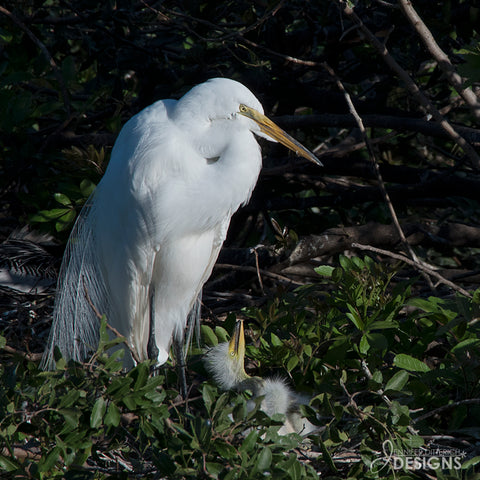
This photo was taken at a rookery where the birds are quite used to people. This great egret and chick were nested on an island and I took the photo from across the water with a telephoto lens.
Do not use drones
It may seem like a good idea to use a drone to get close to a nest, especially one in a high location, but you could easily spook or stress the parents. Drone photography has even been banned in national parks and many state parks since 2014 in large part to protect the wildlife.
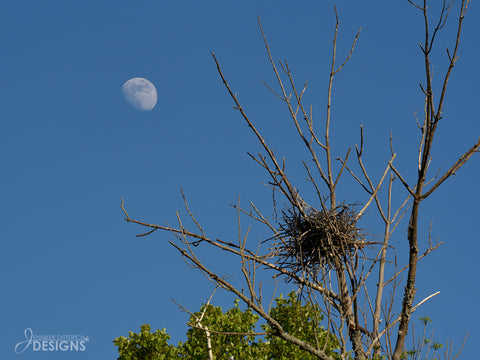
This photo was taken from the ground using a zoom lens. I loved the moon in the background!
Limit your time
Do not spend too much time near the nest and do not visit too often. Staying too long could bring awareness of the nest to predators. Also, your presence could distress the parents and cause them to abandon their nests. No photograph is worth that.
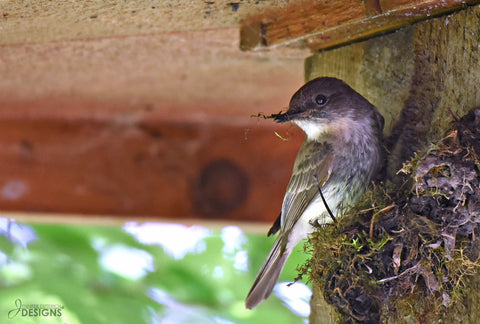
Consider the bird and the nest
The type of bird on the nest makes a big difference in how close you can come to the nest. Yard birds and birds that are used to human interaction are less likely to be stressed if you photograph their nests. Other birds may need a greater amount of space.
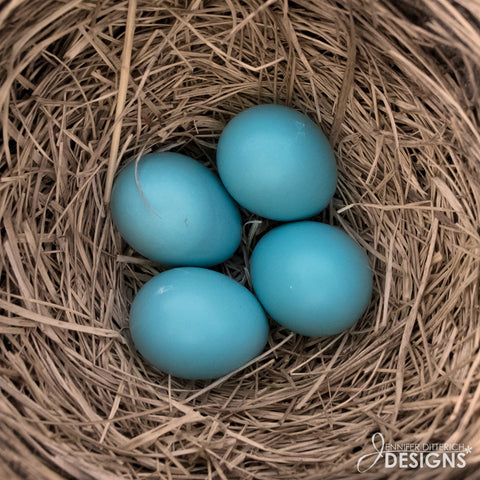
This nest is an example. I had been looking for a robin's nest and when Jody Doll found this one she showed it to me. I safely photographed the nest while the parent was away. I used a zoom lens and never touched the nest. Then I used Photoshop to crop in the photo. I would never attempt a shot like this on a loon's nest or owl's nest.
Do not expose the nest
You may be tempted to push away brush or branches to get a clear shot, but doing so could leave the nest vulnerable to predators. You should never make a permanent change to the nest's surroundings just to get a photo. Nests are hidden for a reason.

Jody Doll took this photo of a northern flicker in its nest cavity through the leaves of the tree. Achieving focus on the bird could not have been easy but I love the context the leaves add to the photo.
Do not share the location online
Many online birding groups forbid this practice. When you reveal the location online you do not know how many people will descend on the site or how those people will behave. To be safe, keep the location confidential and only share with responsible, trusted birders.

Jody Doll spotted this Great Horned Owl nest while we were out birding one day. It is especially important not to disclose the location of owl nests online because if the adults are spooked they might abandon the nest and the owlets.
Use Caution in Sharing Pictures
Sometimes people will be able to tell where a nest photo was taken if they are familiar with the area. By simply posting the photo, even without naming the location, you could inadvertently leave the nest vulnerable.
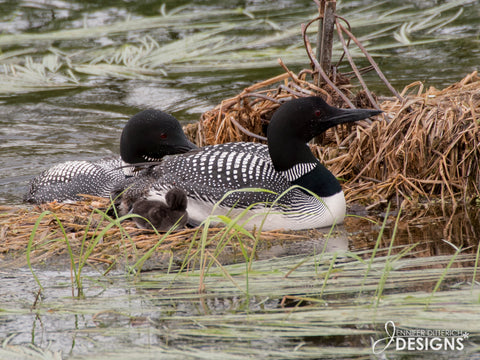
This photo is a good example. I took this photo last spring while the loons were nesting. This loon pair had two chicks. The second chick was hiding behind the mom and the dad is bringing it food.
This nest was visible along a highway near my home and quite a few people did stop to photograph it. I still chose not to release the pictures, though, to keep the loons as safe as possible. (I also took this photo from a distance using a telephoto lens.)
Did I want to share this photo? Of course I did! It was exciting to see and photograph the nest, but the welfare of the loons was the most important factor to me.
Think Long Term
Many birds will reuse their nests for more than one year. Even after the young have left the nest and it is empty, do not tamper with it or remove it. Also use caution when sharing pictures or information about the nest. You could be leaving next year's brood vulnerable.
For example, I would not have shared the loon nest photo above if they were nesting there again this year. Water levels have since changed and the loons have chosen a new place to nest.
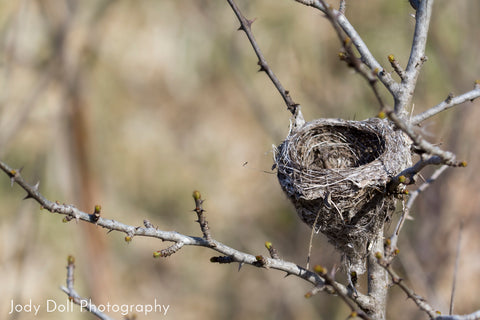
Please keep these tips in mind if you take nest photos this year. By using care and consideration you can protect these beautiful birds and their young.
If you love bird photography, I invite you to download my free Bird Watching Journal. It gives you a place to record your sightings, photos and notes from your birding adventures. Enjoy!


